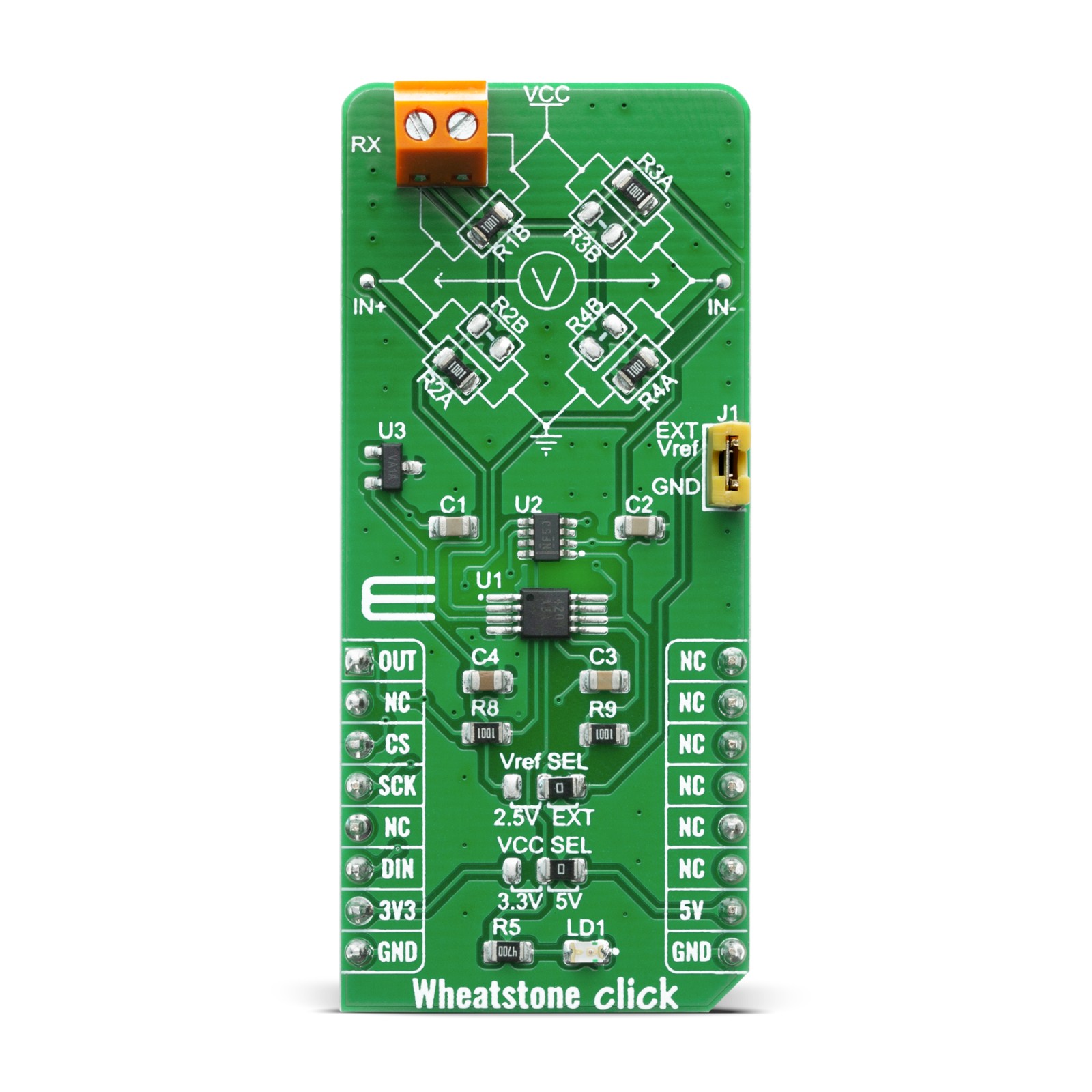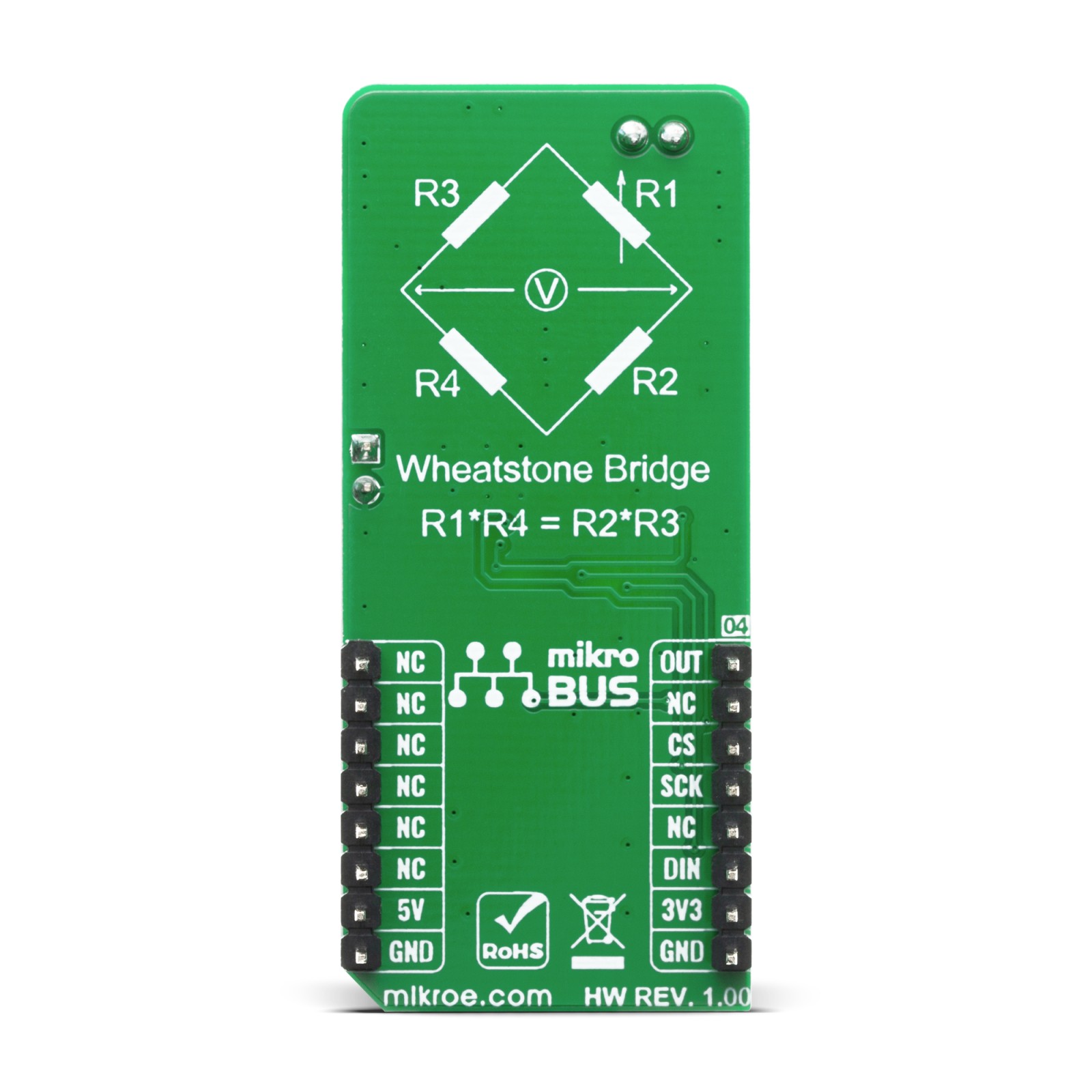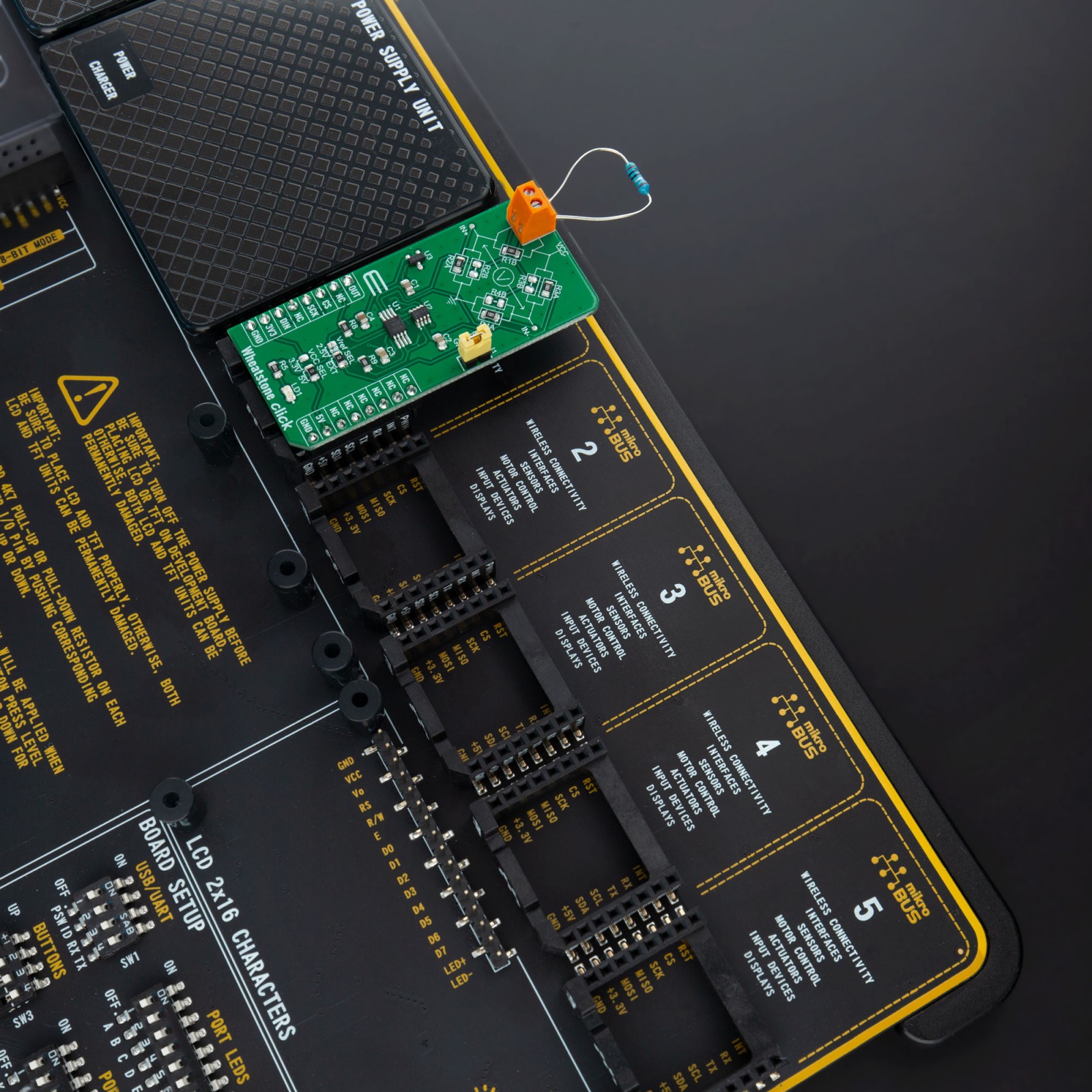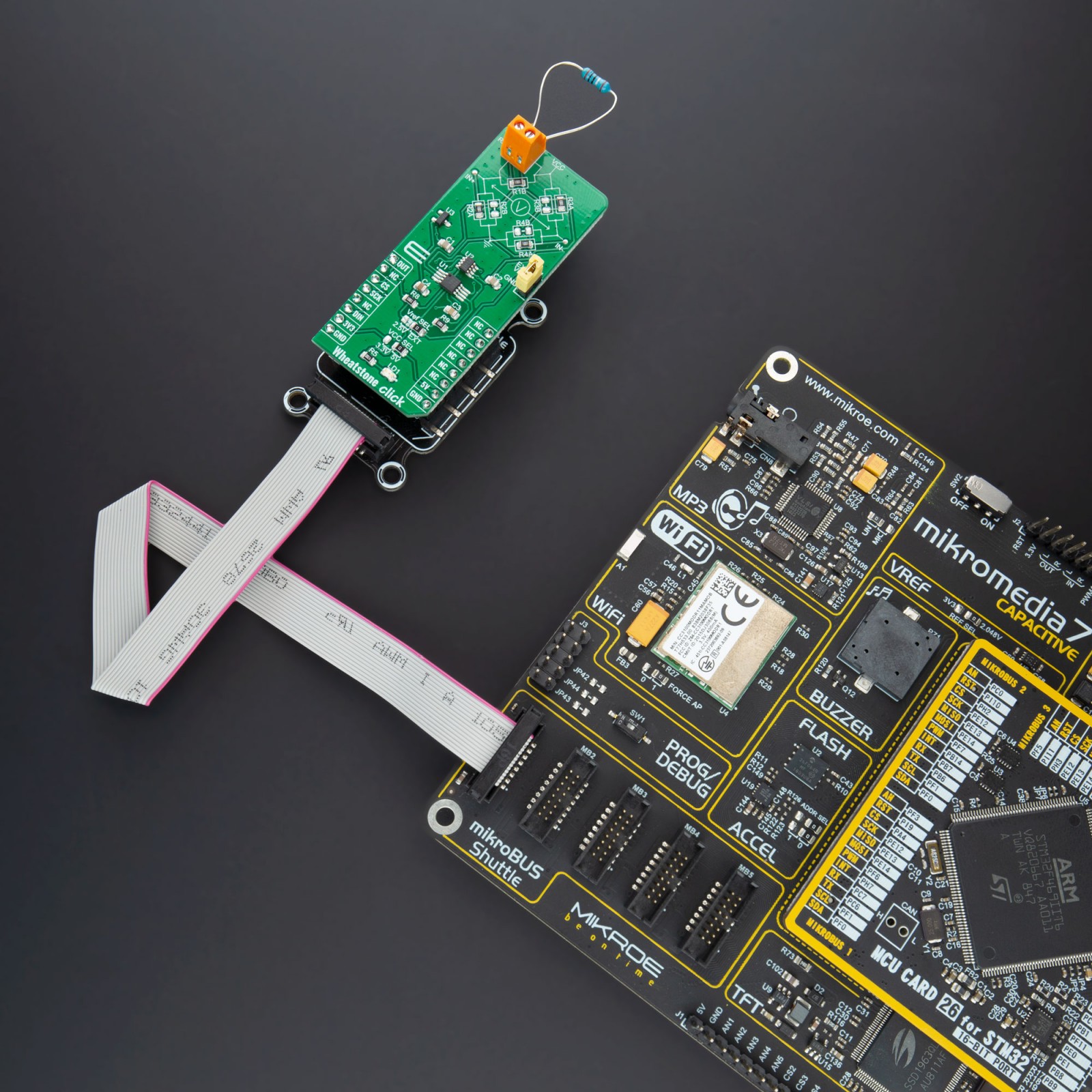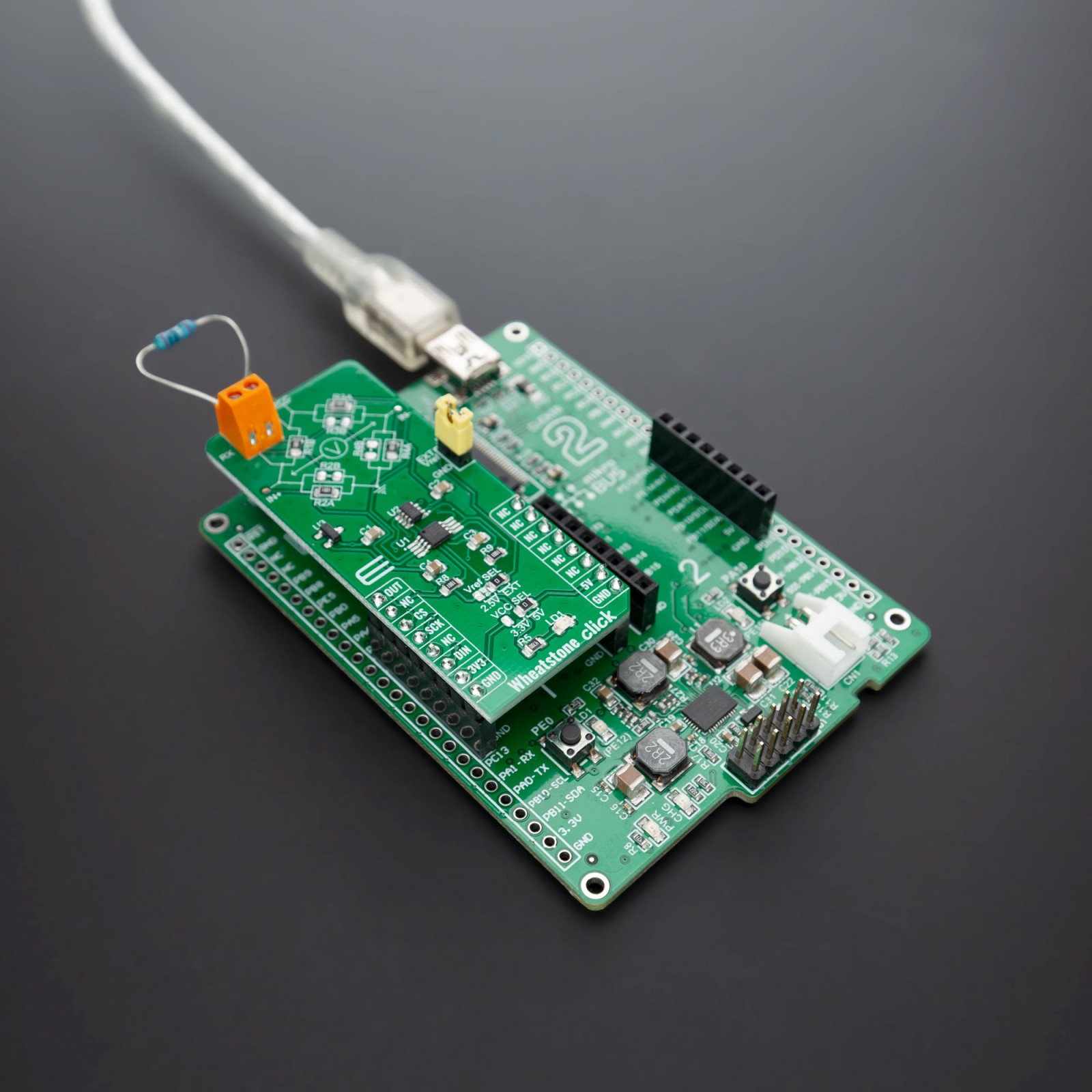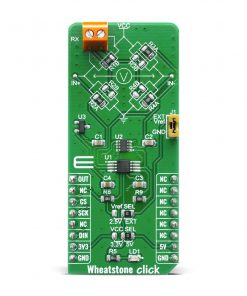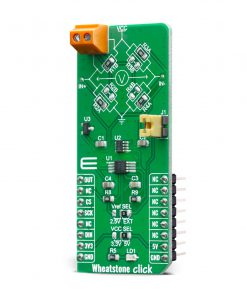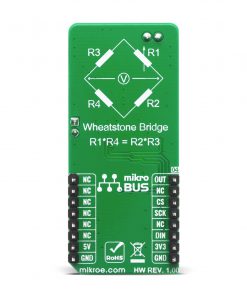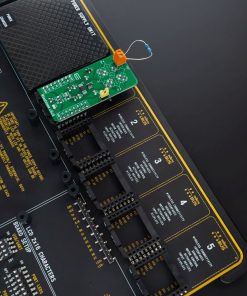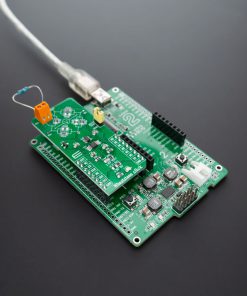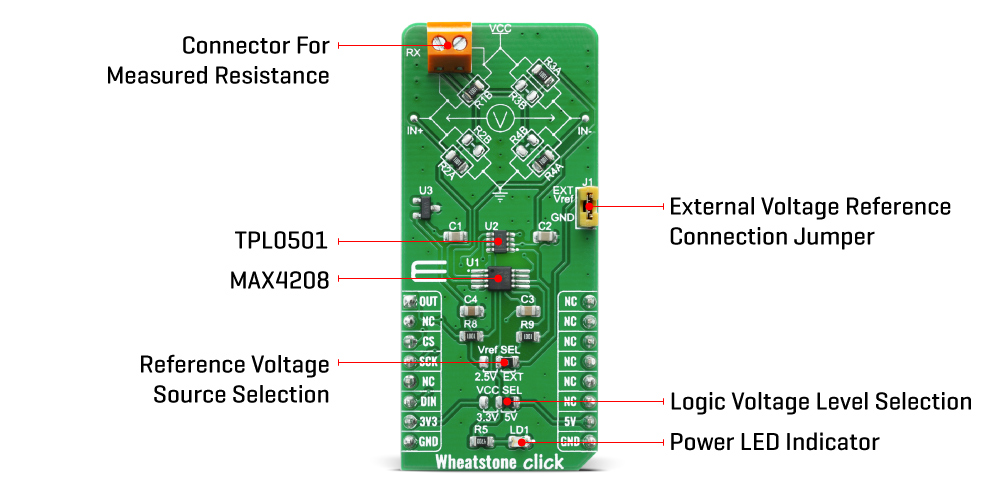Subtotal: R450.00
Wheatstone Click
R635.00 ex. VAT
Wheatstone Click is a measurement Click board™ which utilizes a Wheatstone bridge circuit onboard, in order to precisely measure the resistance of an external element. Besides the wheatstone bridge circuit, this Click board™ also utilizes MAX4208 – an ultra-low offset/drift, precision instrumentation amplifier, from Analog Devices. Having features such as Spread-Spectrum, Auto-Zero, Low Offset Voltage Drift and more makes the mentioned IC ideal for accurate detection of very small voltage changes and conversion into a digital form. Having these features in mind, Wheatstone click is ideal for using in various applications which may include sensor readings and precise resistance measurements.
Wheatstone Click is supported by a mikroSDK compliant library, which includes functions that simplify software development. This Click board™ comes as a fully tested product, ready to be used on a system equipped with the mikroBUS™ socket.
Stock: Lead-time applicable.
| 5+ | R603.25 |
| 10+ | R571.50 |
| 15+ | R539.75 |
| 20+ | R519.43 |

 Alcohol Click
Alcohol Click  BUZZ Click
BUZZ Click 